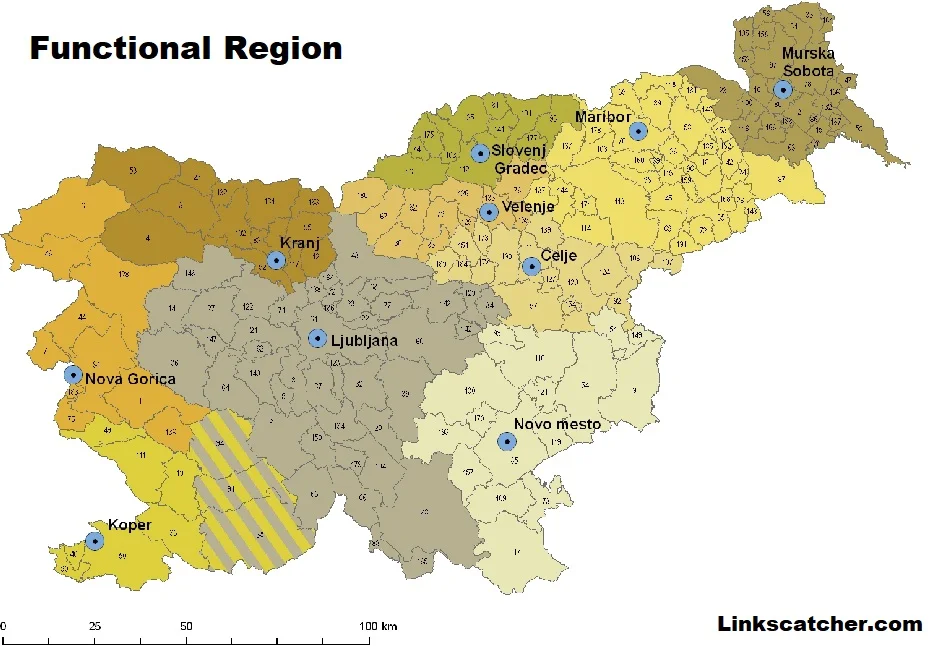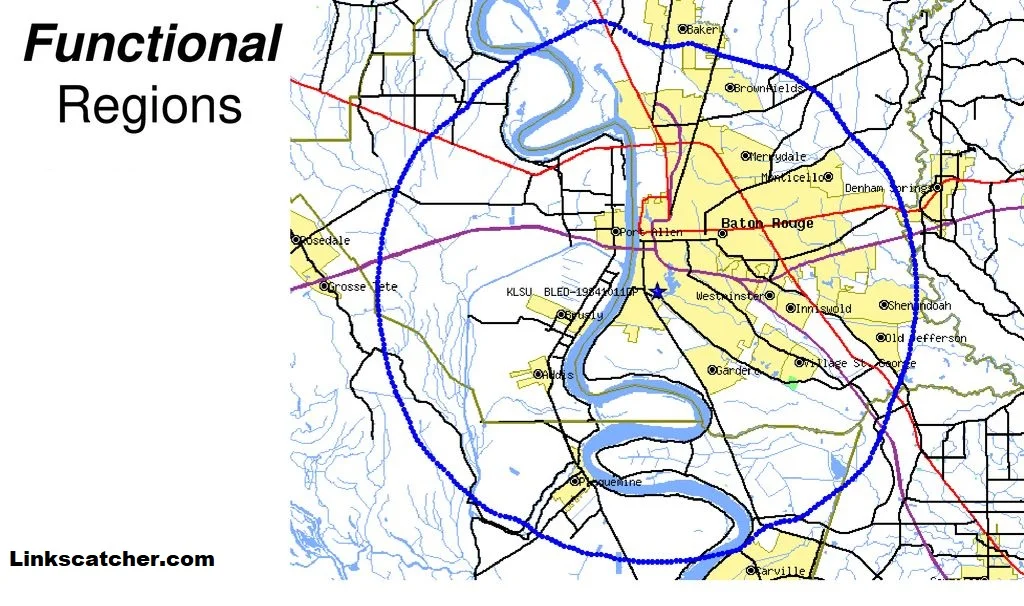
Have you ever considered how interconnected our world is? The concept of a functional region helps us understand these intricate relationships and interactions. Unlike traditional regions defined by physical boundaries, what is a functional region focus on the connections that create a cohesive area through shared activities or resources? Whether it’s bustling urban centers or networks that facilitate trade and communication, select the function of the specified region. shape our daily lives in ways we often take for granted. Let’s dive deeper into what defines these areas and explore some fascinating examples that illustrate their significance!
Definition of Functional Region
A functional region is a space characterized by the interactions and relationships between people, businesses, and institutions. Unlike formal regions defined by clear boundaries such as political borders or physical features, functional region are more fluid. They exist because of shared functions that create a sense of unity.
One key characteristic is that these areas often revolve around a central point or hub, which influences activities in its surroundings. This could be a city center driving economic growth for nearby towns or a major transportation hub facilitating movement across broader distances.
Another defining feature is that the connections within this region can change over time. Economic shifts, technological advances, and population changes all impact how these regions function.
The cohesiveness of functional region is built on networks—be it commerce, communication, or environmental management—that bind individuals together despite geographical distance. These elements highlight why understanding functional regions is essential in geography today.
Examples of Functional Region
Functional region can be observed in various forms, each showcasing unique interactions among its components. Economic networks form one of the most prominent examples. These areas are defined by interconnected businesses and industries that rely on each other for resources, labor, and markets to thrive.
Urban agglomerations illustrate another aspect of examples functional region. Cities often expand into surrounding suburbs or rural areas, creating a metropolitan area where residents commute for work, shopping, and leisure. This blend influences local economies and social dynamics significantly.
Transportation hubs also serve as example of functional region. Airports, train stations, and bus terminals connect different places while facilitating movement of people and goods. Their impact stretches far beyond immediate surroundings.
Communication networks highlight yet another dimension of examples of functional regions. The flow of information—whether through internet connectivity or media outlets—creates clusters where ideas exchange rapidly. Such networks play a crucial role in shaping societal norms and business trends within their reach.
Economic Networks
Economic networks represent the intricate web of relationships that facilitate trade, investment, and commerce. These regions are defined by their economic interactions rather than rigid political boundaries. Businesses, suppliers, and consumers connect in these spaces to optimize efficiency and foster growth.
In a functional region definition geography characterized by an economic network, the flow of goods and services is paramount. Cities often serve as hubs where various industries converge. This clustering drives innovation as companies collaborate and share resources.
Moreover, these networks extend beyond local communities. They encompass global supply chains that link producers with markets worldwide. The interdependence among different players enhances resilience against market fluctuations.
Technology plays a critical role in shaping these economic landscapes. Digital platforms enable instant communication and transactions across vast distances. As businesses adapt to evolving demands, understanding the dynamics of economic networks becomes essential for success.
Urban Agglomerations

Urban agglomerations are fascinating examples of functional region. They consist of densely populated areas that extend beyond the boundaries of a single city. These areas often blend multiple municipalities, creating a metropolitan landscape where economic and social interactions thrive.
One striking characteristic is their diverse population. People from various backgrounds converge in these spaces, contributing to unique cultural dynamics and innovations. The mingling of ideas fuels creativity and drives local economies, making urban agglomerations engines for growth.
Transportation plays a crucial role here as well. Efficient public transit systems connect neighborhoods within an agglomeration, enhancing mobility for residents and visitors alike. This accessibility not only facilitates daily commutes but also fosters economic activities across various sectors.
Moreover, urban agglomerations address challenges collectively. Issues like housing shortages or environmental concerns can be tackled more effectively when cities collaborate within this interconnected framework. As they evolve, these regions continue to shape our understanding of community and development in the modern world.
Transportation Hubs of Functional Region
Transportation hubs are vital components of define functional region. They serve as central points where different modes of transportation intersect. This connectivity is crucial for facilitating the movement of people and goods, ensuring efficiency in both urban and rural areas.
Airports, train stations, and bus terminals exemplify these hubs. They attract local businesses and services that thrive on the foot traffic generated by travelers. As a result, you’ll often find hotels, restaurants, and shops clustered around these key locations.
Moreover, transportation hubs can significantly impact regional development. Areas surrounding these centers tend to experience economic growth due to increased accessibility. This leads to job creation and improved infrastructure which benefits everyone living nearby.
In addition to their economic significance, they also play an essential role in promoting sustainability. By encouraging public transport use over single-occupancy vehicles, transportation hubs contribute to reduced congestion and lower carbon emissions within example of functional regions definition.
Communication Networks
Communication networks are pivotal in defining a functional region examples. They enable the flow of information, connecting people and businesses across vast distances. These networks can include everything from telephone lines to internet connections, facilitating seamless interactions.
In urban areas, communication networks bind communities together. They enhance social cohesion by allowing residents to stay informed and engaged with local events. This connectivity fosters a sense of belonging among individuals who share similar interests or challenges.
Rural regions benefit from improved communication as well. With advancements in technology, even remote locations can access vital information and services online. This accessibility helps bridge the gap between city dwellers and those living outside metropolitan areas.
Moreover, strong communication networks support economic growth within functional regions example. Businesses rely on these systems for efficient operations and customer engagement. As digital channels continue to evolve, their role in shaping regional dynamics becomes increasingly significant.
Environmental Regions
Environmental regions are another vital aspect of functional areas. These regions are defined by ecological factors, such as climate, vegetation, and land use. They showcase how humans interact with their surroundings and adapt to local conditions.
For instance, a forested area can serve different functions for communities living nearby. It may provide resources like timber or recreational spaces while also playing a crucial role in biodiversity conservation. Similarly, coastal regions might be heavily influenced by both human activities and natural processes like erosion or rising sea levels.
Understanding this environmental functional region helps policymakers make informed decisions about resource management and sustainability practices. By recognizing the interconnectedness of ecosystems and human activity, we create pathways toward more resilient communities that respect nature’s balance.
Exploring the concept of functional region definition reveals not only the complexity of our world but also highlights the importance of collaboration across various sectors to enhance regional development.